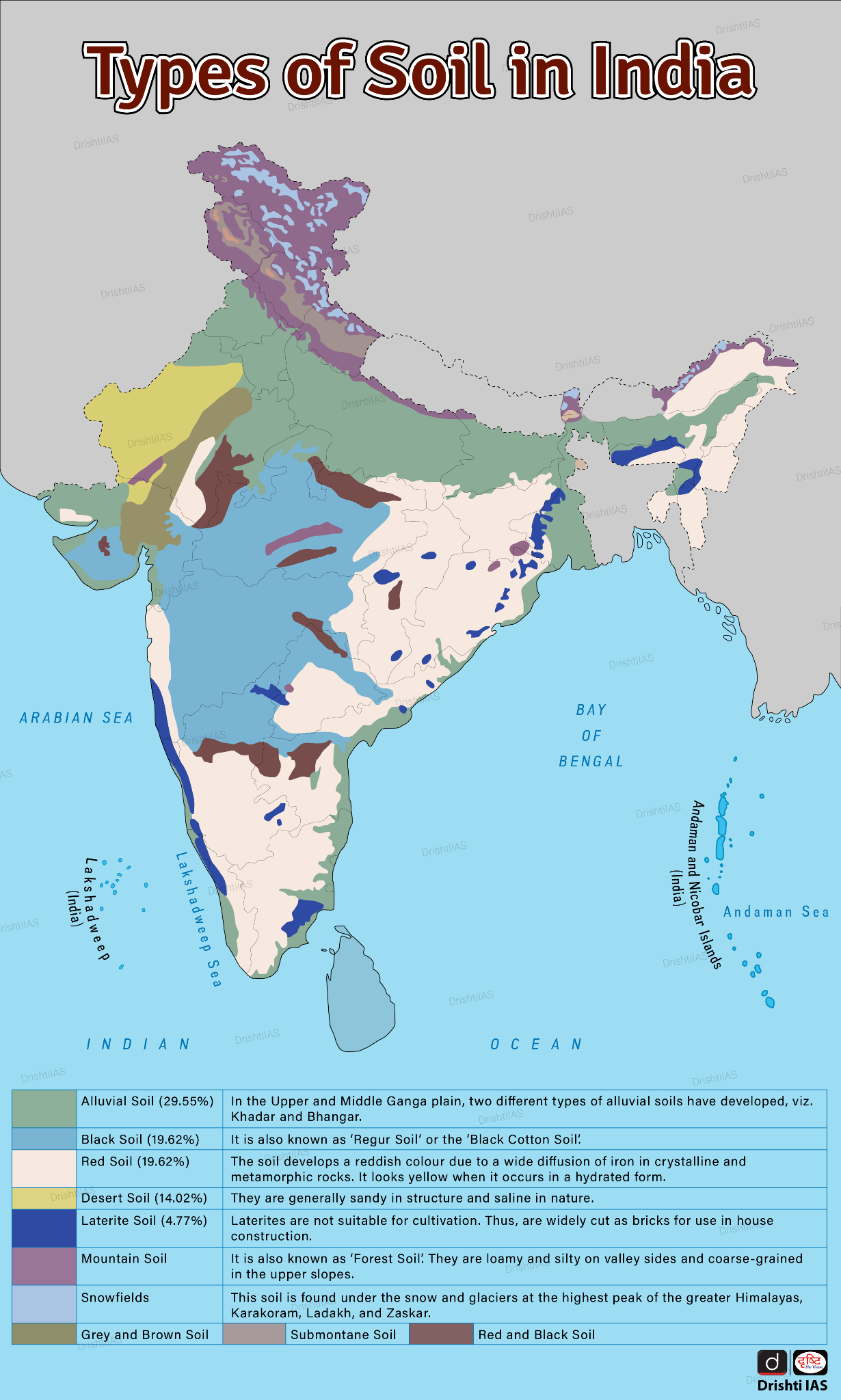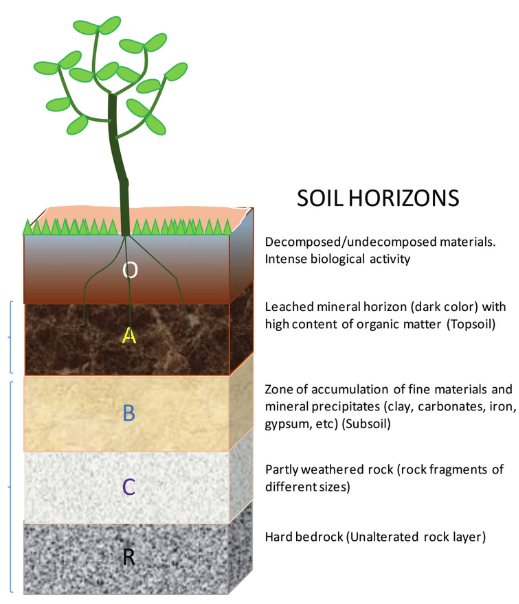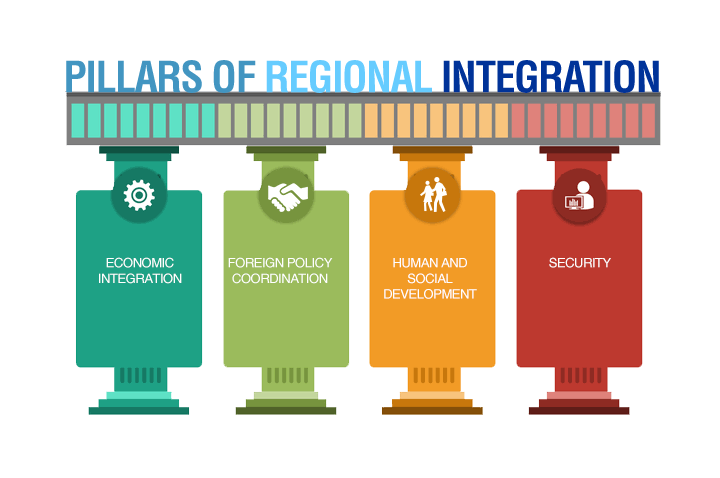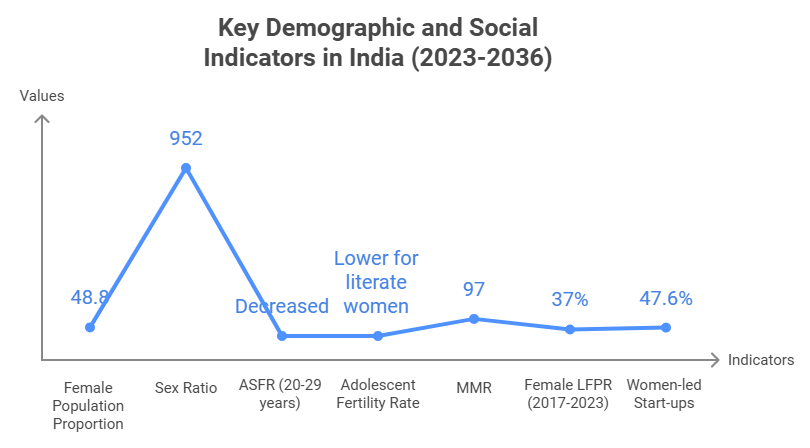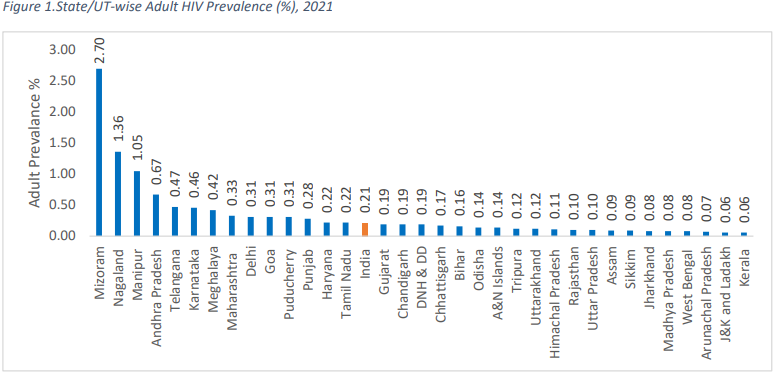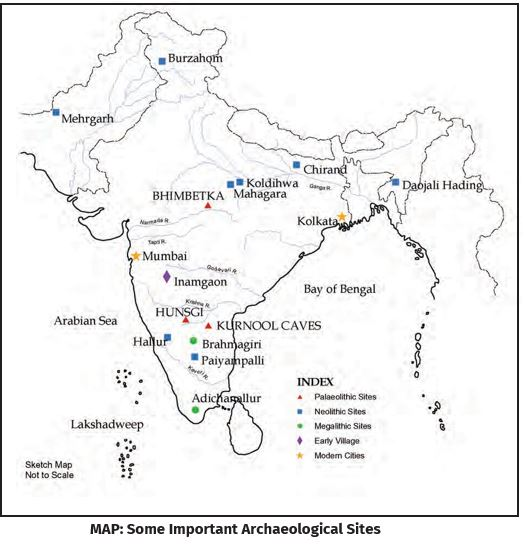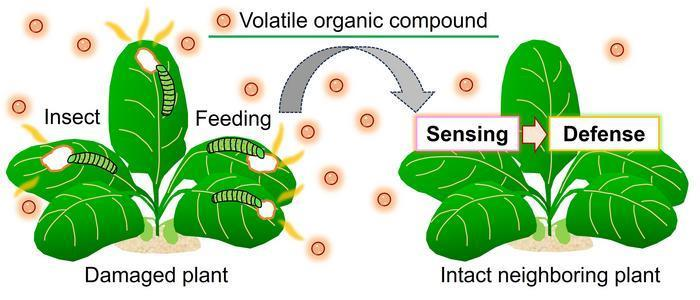Global Soil Conference 2024 and Soil in India
For Prelims: Soil Health Card Scheme, Pradhan Mantri Krishi Sinchayee Yojana, Zero Budget Natural Farming, Sustainable Development Goal 15, Soil Types in India
For Mains: Soil Health and Sustainability, Sustainable Agricultural Practices, India’s Soil Conservation Efforts
Why in News?
Recently, the Global Soil Conference (GSC) 2024 was held in New Delhi, highlighting the importance of soil health for food security, climate change mitigation, and ecosystem services.
What is the Global Soil Conference 2024?
- About: The GSC 2024, organised by the Indian Society of Soil Science (ISSS) in collaboration with the International Union of Soil Sciences (IUSS), aims to address challenges in sustainable soil/resource management.
- The event aimed to foster a global dialogue on how caring for soils can drive sustainability across various sectors.
- Theme: Caring Soils Beyond Food Security: Climate change mitigation & Ecosystem Services.
- Key Highlights of GSC 2024: Soil health was recognized as a pressing issue, with soil degradation affecting productivity and posing a threat to global food security.
- Around 30% of India's soil is reportedly compromised due to erosion, salinity, pollution, and loss of organic carbon.
- The conference underscored the importance of international cooperation in tackling soil erosion, which aligns with Sustainable Development Goal 15 (SDG 15) of the United Nations.
- SDG 15 aims to protect, restore, and promote the sustainable use of terrestrial ecosystems, manage forests sustainably, combat desertification, halt land degradation, and halt biodiversity loss.
Note:
- The ISSS was established in 1934, in Calcutta under the Societies Registration Act xxi of 1860. The Society organises seminars, and conferences to promote soil science knowledge.
- IUSS is a non-profit, non-governmental scientific society. It is part of the International Science Council (ISC).
- The IUSS promotes soil science research and its applications, fostering global collaboration among scientists.
What are the Concerns Regarding Soil Health in India?
- Soil Degradation: Over one-third of India’s land is at risk of degradation due to unsustainable farming practices and wrong soil management practices.
- Soil Erosion and Loss of Fertility: India loses 15.35 tonnes of soil per hectare annually, reducing crop productivity and causing a loss of 13.4 million tonnes of rainfed crops.
- Soil salinity: Salinity harms soil health by reducing water infiltration, nutrient uptake, and soil aeration, leading to decreased crop productivity.
- It disrupts soil structure, promotes salt-tolerant organisms, and accelerates soil degradation, ultimately making the land infertile.
- Low Organic Content and Nutrient Levels: A major concern is the organic content in the Indian soil is inordinately low (around 0.54%), indicating a deficiency in essential nutrients, which affects soil fertility and agricultural productivity.
- Over 70% of Indian soils suffer from either soil acidity or alkalinity, which disrupts the natural nutrient cycle.
- Additionally, essential nutrients like nitrogen, phosphorus, and potassium are often deficient in Indian soils, further exacerbating the health crisis.
- Desertification: It leads to soil degradation by reducing organic matter, nutrient content, and moisture retention. It results in the loss of soil fertility, causing lower agricultural productivity.
- Desertification accelerates erosion, reduces biodiversity, and makes land unsuitable for farming, worsening food insecurity.
- Diversion of Fertile Land: A significant amount of fertile agricultural land is being diverted for non-agricultural purposes, contributing to the loss of valuable soil resources.
India’s Initiatives for Soil Conservation:
What are the Key Facts About Soil in India?
- Classification of Soils: India's varied relief features, landforms, climatic realms, and vegetation types have contributed to the development of various types of soils.
- Historically, Indian soils were classified into two main groups: Urvara (fertile) and Usara (sterile).
- The Soil Survey of India, established in 1956, and the National Bureau of Soil Survey and Land Use Planning have classified Indian soils based on the United States Department of Agriculture (USDA) Soil Taxonomy, considering genesis, colour, composition, and location.
- Major Soil Types in India:
|
Soil Type |
Distribution |
Characteristics |
Main Crops Grown |
|
Alluvial Soils |
Northern plains, river valleys, deltas of the east coast, and plains of Gujarat |
Vary from sandy loam to clay; rich in potash, poor in phosphorus; Khadar (new alluvium) and Bhangar(older alluvium); colour ranges from light grey to ash grey |
Rice, wheat, sugarcane, cotton |
|
Black Soil |
Deccan Plateau (Maharashtra, Madhya Pradesh, Gujarat, Andhra Pradesh, Tamil Nadu) |
Clayey, deep, impermeable; swells and becomes sticky when wet, shrinks and develops cracks when dry; retains moisture for long periods; rich in lime, iron, magnesia, alumina, and potash; poor in phosphorus, nitrogen, and humus |
Cotton, sorghum, pulses, millets |
|
Red and Yellow Soil |
Eastern and southern Deccan Plateau, parts of Odisha, Chhattisgarh, southern Ganga plain |
Develops on crystalline igneous rocks; red due to iron diffusion, yellow when hydrated; fine-grained soils are fertile, coarse-grained soils in uplands are less fertile; poor in nitrogen, phosphorus, and humus |
Wheat, rice, millets, pulses, groundnut |
|
Laterite Soil |
High temperature and rainfall areas (Karnataka, Kerala, Tamil Nadu, Madhya Pradesh, Odisha, Assam) |
Result of intense leaching; rich in iron oxide and potash, poor in organic matter, nitrogen, phosphate, and calcium |
Cashew, tea, coffee, rubber, coconut |
|
Arid Soil
|
Western Rajasthan, Punjab and Haryana |
Sandy and saline; poor in moisture and humus; high evaporation and calcium content create 'kankar' layers; poor nitrogen, normal phosphate; colour ranges from red to brown |
Barley, cotton, millet, pulses |
|
Saline Soil |
Western Gujarat, eastern coastal deltas, Sunderbans (West Bengal), areas with excessive irrigation (Punjab, Haryana) |
High in sodium, potassium, and magnesium; infertile; saline due to dry climate and poor drainage; poor nitrogen and calcium; salt crust formation due to capillary action in irrigated areas |
Rice, wheat, barley (with gypsum treatment) |
|
Peaty Soil |
Areas with heavy rainfall and high humidity (Northern Bihar, southern Uttarakhand, coastal West Bengal, Odisha, Tamil Nadu) |
High organic matter and humus content; heavy and black; can be alkaline; organic matter up to 40-50%; found in waterlogged and swampy areas |
Rice, jute |
|
Forest Soil |
Forested areas with sufficient rainfall, Himalayas, Western and Eastern Ghats |
Varies in structure and texture; loamy and silty in valleys, coarse-grained in upper slopes; acidic and low in humus in snow-bound areas; fertile in lower valleys |
Tea, coffee, spices, tropical fruits |
Soil Profile
- About: A soil profile is a vertical cross-section of soil, showing different layers (horizons) that vary in texture, colour, and chemical composition.
- Soil Horizons developed through interactions of climate, organisms, and land surface can be organic (O) or mineral (A, E, B, C).
- Key Layers of Soil:
- O Horizon (Organic Layer): Contains undecomposed organic matter like leaves, twigs, and moss.
- A Horizon (Topsoil): Rich in organic matter and minerals, supports plant growth, soft and porous.
- E Horizon (Eluviated Layer): A lighter, nutrient-depleted layer due to leaching (removal of minerals by water).
- B Horizon (Subsoil): Accumulates leached minerals from upper layers; contains iron, clay, and organic compounds.
- C Horizon (Parent Rock): Made up of broken bedrock or saprolite, with little organic matter.
- R Horizon (Bedrock): Unweathered bedrock at the base of the soil profile.
What Can Be Done to Enhance Soil Health?
- Policy: Develop more comprehensive schemes like the SHC, which provides farmers with detailed information about the nutrient status of their soil. This helps in making informed decisions about fertiliser use and soil management.
- Carbon Sequestration: Soil carbon sequestration boosts soil health by storing atmospheric carbon dioxide (CO2) as organic carbon, improving fertility and water retention. Practices like cover cropping and reduced tillage enhance carbon levels and sustainability.
- Sustainable Farming Practices: India can adopt large-scale no-till farming, as successfully implemented in Brazil, to improve soil health, reduce erosion, and boost crop yields.
- This sustainable practice ensures better productivity and environmental conservation.
- Sustainable Farming practices like crop rotation, agroforestry and organic farming are vital for soil health and environmental conservation.
Conclusion
The Global Soil Conference 2024 highlighted the need for sustainable soil management to ensure food security and climate resilience. India must adopt better farming practices and policies to address soil degradation. Strengthening soil health is crucial for long-term agricultural and economic sustainability.
|
Drishti Mains Question: Soil health is integral to ensuring food security." Discuss the challenges faced by India regarding soil degradation and propose sustainable solutions. |
UPSC Civil Services Examination, Previous Year Questions (PYQs)
Prelims
Q. The black cotton soil of India has been formed due to the weathering of
(a) brown forest soil
(b) fissure volcanic rock
(c) granite and schist
(d) shale and limestone
Ans: (b)
Exp:
- Black soil, also known as regur soil or black cotton soil, is ideal for growing cotton. The climatic conditions along with the parent rock material are the important factors for the formation of black soil. Black soil is typical of the Deccan trap (Basalt) region spread over northwest Deccan plateau and is made up of lava flows (fissure volcanic rock).
- The Deccan Plateau includes parts of Maharashtra, Madhya Pradesh, Gujarat, Andhra Pradesh and some parts of Tamil Nadu. Black soil also covers upper reaches of the Godavari and the Krishna, and the north Maharashtra, Madhya Pradesh, Gujarat, Andhra Pradesh and some parts of Tamil Nadu.
- Chemically, the black soils are rich in lime, iron, magnesia and alumina. They also contain potash. But they lack phosphorus, nitrogen and organic matter. The colour of the soil ranges from deep black to grey.
- Therefore, option (b) is the correct answer.
Q. Which of the following statements regarding laterite soils of India are correct? (2013)
- They are generally red in colour.
- They are rich in nitrogen and potash.
- They are well-developed in Rajasthan and UP.
- Tapioca and cashew nuts grow well on these soils.
Select the correct answer using the codes given below:
(a) 1, 2 and 3
(b) 2, 3 and 4
(c) 1 and 4
(d) 2 and 3 only
Ans: (c)
2nd India-CARICOM Summit
For Prelims: India-CARICOM, International Solar Alliance, Mission LiFE, Digital Public Infrastructure, Jan Aushadhi Kendras, Small Island Developing States (SIDS), Caribbean Sea, UN General Assembly (UNGA), India-UN Partnership Fund for South-South Cooperation, One World One Sun One Grid (OWOSOG), CoWin, National Digital Health Mission (NDHM).
For Mains: Strengthening of India-CARICOM relations and its significance.
Why in News?
Recently, the Prime Minister of India chaired the 2nd India-CARICOM Summit in Georgetown, Guyana, alongside the Prime Minister of Grenada, the current CARICOM Chair.
- The first India-CARICOM Summit was held in 2019 in New York.
What are the Key Highlights of the 2nd India-CARICOM Summit?
- 7 Pillars of Cooperation: India’s Prime Minister proposed seven key pillars to strengthen ties between India and 'CARICOM'. These pillars are:
- C: Capacity Building: India announced an additional 1000 ITEC (Indian Technical and Economic Cooperation) slots for CARICOM countries over the next five years.
- A: Agriculture and Food Security: India shared its experience in agriculture, particularly in the use of technology such as drones, digital farming, and farm mechanisation.
- R: Renewable Energy and Climate Change: India called for greater collaboration on global initiatives like the International Solar Alliance and Mission LiFE.
- I: Innovation, Technology, and Trade: Prime Minister Modi offered India’s Digital Public Infrastructure and other technological models to improve public service delivery.
- C: Cricket and Culture: India proposed organising "Days of Indian Culture" in CARICOM countries and providing cricket training for young women cricketers from the region.
- O: Ocean Economy and Maritime Security: India expressed willingness to collaborate on maritime domain mapping and hydrography in the Caribbean Sea.
- M: Medicine and Healthcare: India offered its model for affordable healthcare, including the provision of generic medicines through Jan Aushadhi Kendras and the promotion of Yoga for well-being.
- Climate Justice: CARICOM leaders appreciated India’s leadership in championing climate justice for Small Island Developing States (SIDS).
- SIDS are responsible for less than 1% of global greenhouse gas emissions but are among the most affected by climate change impacts.
- Climate justice means addressing the unequal and disproportionate impacts of climate change on different communities, particularly the poor, marginalised, and vulnerable groups.
Awards to PM Narendra Modi
- Prime Minister Narendra Modi received top awards from Guyana and Barbados during his visit.
- Guyana conferred the "Order of Excellence" and Barbados awarded the "Honorary Order of Freedom".
- Recently, Dominica also announced its highest national award, the "Dominica Award of Honour," for PM Modi.
- PM Modi's list of international awards now includes 19 prestigious recognitions.
- Notable awards include Russia's "Order of St. Andrew the Apostle" and the US's "Legion of Merit."
What is the Caribbean Community (CARICOM)?
- About: CARICOM is a grouping of 21 countries: 15 Member States and 6 Associate Members including both island states and mainland territories like Suriname and Guyana.
- CARICOM was founded in 1973 with the signing of the Treaty of Chaguaramas by four founding members of Barbados, Guyana, Jamaica, and Trinidad and Tobago.
- 15 member states are Antigua and Barbuda, Bahamas, Barbados, Dominica, Grenada, Guyana, Haiti, Belize, Jamaica, Montserrat, Saint Lucia, St. Kitts and Nevis, St. Vincent and the Grenadines, Suriname, and Trinidad and Tobago.
- The 6 associate members are Anguilla, Bermuda, British Virgin Islands, Cayman Islands, Curaçao, and Turks and Caicos Islands
- Diversity: The community is made up of people from African, Indian, European, Chinese, Portuguese, and Indigenous backgrounds.
- Population: Approximately 16 million, with a young demographic, 60% under the age of 30.
- Languages: The region is multilingual, with English as the primary language, alongside French, Dutch, and various African and Asian languages.
- Geographical Spread: The member states stretch from The Bahamas in the north to Suriname and Guyana in the south, making it a vast and diverse region with varying levels of economic and social development.
- They are primarily located in the Caribbean Sea (Atlantic Ocean).
- Pillars of CARICOM's Integration: CARICOM's integration is built on four main pillars, which guide the objectives of the Community:
- Economic Integration: Enhance development and competitiveness through trade and productivity.
- Foreign Policy Coordination: Present a unified voice in international diplomacy.
- Human and Social Development: Focus on health, education, and poverty alleviation.
- Security: Strengthen regional security, disaster response, and crime prevention.
India-CARICOM Relations
- In November 2003, a CARICOM delegation visited India, leading to the establishment of a Standing Joint Commission.
- India's High Commissioner in Georgetown (Capital of Guyana) is also accredited as Ambassador to CARICOM, highlighting its commitment to regional cooperation.
- First Meeting of India-CARICOM Foreign Ministers (2005) laid the groundwork for closer collaboration, particularly in areas like trade and development projects through the Caribbean Development Bank.
- First India-CARICOM Joint Commission (2015) held in Georgetown which led to promotion of business partnerships between India and CARICOM countries.
- India-CARICOM Ministerial Meetings are held regularly, with notable events occurring on the sidelines of the UN General Assembly (UNGA).
- Humanitarian Assistance: In 2017, after hurricanes in the Caribbean sea, India provided USD 200,000 in emergency aid and additional support through the India-UN Partnership Fund for South-South Cooperation.
- India-CARICOM Summit (2019) took place in New York on the sidelines of the UNGA, saw India offering substantial support to CARICOM countries.
- USD 14 million Grant: For community development projects.
- USD 150 million Line of Credit: Specifically for solar energy and climate change projects.
- Special Training Programs: In response to the needs of CARICOM nations, India offered tailored capacity-building programs.
- India-CARICOM Task Force: It was established to reinvigorate cooperation by streamlining and enhancing ongoing initiatives and establishing clearer strategies for the future.
Why is India and CARICOM Important for Each Other?
- Strategic Expansion: The Latin America and the Caribbean (LAC) region is diversifying its geopolitical ties, seeking new partnerships in Asia, which aligns with India’s ambition to expand its presence in the region.
- Shared Climate Concerns: India and CARICOM face climate change impacts, including rising sea levels and extreme weather.
- India’s COP-26 efforts align with CARICOM’s call for climate finance for mitigation and adaptation.
- International Solar Alliance (ISA): The ISA, co-founded by India, offers a platform for CARICOM nations to enhance solar energy deployment.
- Additionally, the One World One Sun One Grid (OWOSOG) initiative is an innovative approach to creating a global grid that could transmit solar energy across continents.
- Digital Health Collaboration: India’s digital health advancements, like CoWin and National Digital Health Mission (NDHM), offer a model for improving healthcare systems in CARICOM, especially for climate-induced health threats.
- Biofuel and Energy Cooperation: India’s collaboration with Brazil in biofuel research could be extended to CARICOM nations, creating a platform for joint energy solutions and biofuel production.
- Strengthened Partnerships: India’s Prime Minister’s visit and India’s ongoing development assistance programs, such as the USD 1 million contribution to the CARICOM Development Fund, lay a strong foundation for future collaborations.
Conclusion
The 2nd India-CARICOM Summit marked a significant step in deepening bilateral ties, with a focus on areas such as renewable energy, climate change, healthcare, and economic development. This collaboration offers vast opportunities to address shared challenges, particularly climate change and sustainable growth, enhancing India’s role in the Caribbean region.
|
Drishti Mains Question: Discuss the current state of India-CARICOM relations and the potential for enhancing bilateral cooperation in trade, climate change, and people-to-people connections? |
UPSC Civil Services Examination Previous Year’s Questions (PYQs)
Prelims
Q. Which one of the following pairs is correctly matched? (2013)
Geographical Feature - Region
(a) Abyssinian Plateau - Arabia
(b) Atlas Mountains - North-Western Africa
(c) Guiana Highlands - South-Western Africa
(d) Okavango Basin - Patagonia
Ans: (b)
Mains
Q. Why indentured labour was taken by the British from India to other colonies? Have they been able to preserve their cultural identity over there? (2018)
Q. Indian Diaspora has an important role to play in South East Asian countries’ economy and society. Appraise the role of Indian Diaspora in South-East Asia in this context. (2017)
Rethinking New Population Strategy
For Prelims: Two-Child Policy, Local Body Elections, Aging Population, Fertility Rate, Total Fertility Rate (TFR), Replacement Level, Labor Shortages Skills Training, Job Creation, India Ageing Report 2023, India Employment Report 2024, Unplanned Urbanisation, Rights-Based Programs, Poverty Alleviation.
For Mains: Significance of Demographic Policies to Unleash Demographic Dividend for India.
Why in News?
Recently, Andhra Pradesh reversed its longstanding two-child policy, which had been in place for nearly three decades and prohibited individuals with more than two children from contesting local body elections to control population growth.
- The government argued that the state was facing the challenges of a rapidly aging population and a declining fertility rate, which could have serious long-term economic and social consequences.
What is the Need of the New Population Strategy in India?
- Declining Total Fertility Rate: India’s Total Fertility Rate (TFR) has seen a steady decline in recent decades. As per NFHS-5 (2019-21), India's TFR stands at 2.0 children per woman, which is below the replacement level of 2.1, below which the population begins to shrink in the long run.
- Some states like Andhra Pradesh (TFR of 1.5) are already well below this threshold, raising concerns about a shrinking workforce.
- This demographic shift could result in labor shortages and increased pressure on the working-age population, thereby reducing the potential for economic growth.
- Demographic Dividend for Economic Growth: With approximately 68% of the population in the working-age group (15-64 years) and 26% in the 10-24 age group, India is poised to become one of the youngest countries globally.
- A new population policy is crucial for harnessing this potential and addressing future challenges, along with an adequate investment in education, skills training, and job creation.
- Aging Population: As per the India Ageing Report 2023 of the United Nations Population Fund, over 20% of India’s population will be aged 60 or above.
- An ageing population in India poses challenges such as higher healthcare demand for chronic and geriatric care, necessitating family planning policies that address healthy ageing and elderly care.
- Resource Scarcity and Environmental Pressure: India's growing population strains natural resources, with cities like Delhi and Bangalore facing severe water stress, as per capita water availability drops.
- Furthermore, unplanned urbanization, driven by high population growth, leads to overburdened infrastructure, pollution, and slums, highlighting the need for a new population policy to avoid skewed development.
- Rising Inequality and Low Living Standards: Rapid population growth strains public resources, limiting access to healthcare, education, and social services.
- High fertility rates in impoverished areas exacerbate more comprehensive population policy for economic inequality.
India’s Population Policies
- Post-Independence Initiatives (1952): India pioneered global family planning programs, focusing on reducing birth rates through contraceptives and awareness campaigns.
- National Population Policy 1976: Recognising the link between population control and economic development, this policy emphasized measures such as incentivised sterilisation, increasing the legal marriage age (to 18 for girls and 21 for boys), and expanding access to education and healthcare.
- Emergency Period (1975–1977): This phase became infamous for forced sterilizations, eroding public trust in government-led population control measures.
- It highlighted the need for more inclusive and voluntary approaches.
- National Population Policy 2000: This policy set immediate goals to meet contraceptive needs and reduce maternal and infant mortality, a medium-term goal of achieving replacement-level fertility (TFR of 2.1), and a long-term objective of population stabilisation.
- Current Focus Areas: Modern strategies emphasise improving access to contraceptives, prioritising maternal and child health, and advocating for delayed marriage.
- Population stabilisation is now integrated with broader goals of economic growth and environmental sustainability.
- State-Level Policies: Some states like Uttar Pradesh and Assam have introduced policies promoting a two-child norm, linking it with incentives or restrictions in areas such as government jobs, welfare benefits, and electoral participation.
Way Forward
- Focus on Voluntary Family Planning: India must have rights-based family planning policies that empower individuals.
- Family planning strategies should empower women by enforcing laws against sex-selective abortion, promoting female literacy, and ensuring equal workforce opportunities, alongside education, economic independence, and social security.
- Emphasize a Region-Specific Approach: Given India’s demographic diversity, a region-specific approach is necessary.
- States with high fertility rates, such as Uttar Pradesh and Bihar, may need region-specific strategies, while states with low fertility rates, like Tamil Nadu and Andhra Pradesh, require policies tailored to their distinct needs.
- Family Planning as a Holistic Development Agenda: Family planning should be integrated into a broader socioeconomic development framework.
- Linking family planning with education, employment generation, and poverty alleviation will create a more sustainable development model that aligns with India's long-term growth and social justice goals.
- Strengthen Social and Healthcare Systems: India must invest in healthcare infrastructure and social security systems, especially to address the challenges posed by an ageing population.
- Expanding geriatric care facilities, promoting the silver economy, and offering flexible work arrangements for older workers can mitigate the pressures of a shrinking workforce.
|
Drishti Mains Question: What challenges does India face with its ageing population, and how can family planning policies address these issues? |
UPSC Civil Services Examination, Previous Year Question (PYQ)
Prelims:
Q. To obtain full benefits of demographic dividend, what should India do? (2013)
(a) Promoting skill development
(b) Introducing more social security schemes
(c) Reducing infant mortality rate
(d) Privatization of higher education
Ans: (a)
Mains:
Q. “Demographic Dividend in India will remain only theoretical unless our manpower becomes more educated, aware, skilled and creative.” What measures have been taken by the government to enhance the capacity of our population to be more productive and employable? (2016)
Q. “While we flaunt India’s demographic dividend, we ignore the dropping rates of employability.” What are we missing while doing so? Where will the jobs that India desperately needs come from? Explain. ? (2014)
GQ-RCP Platform for HIV Detection
Why in News?
Recently, researchers at the Jawaharlal Nehru Centre for Advanced Scientific Research (JNCASR), an autonomous institute under the Department of Science and Technology, have developed a new technology for early and accurate detection of HIV.
- The newly developed GQ Topology-Targeted Reliable Conformational Polymorphism (GQ-RCP) platform, adapted from SARS-CoV-2 diagnostics, highlights the innovative capabilities of Indian research institutions.
What are the Key Features of GQ-RCP Platform?
- GQ-RCP Platform: The G-Quadruplex (GQ) structure is a unique four-stranded DNA conformation that plays a crucial role in various biological processes, including gene regulation and genome stability.
- Functionality: This platform enables targeted detection of HIV-derived DNA structures using a fluorometric test, enhancing diagnostic reliability and significantly reducing false positives associated with HIV detection.
- The GQ-RCP platform promises to enhance early detection capabilities and reduce reliance on less specific general DNA sensing probes that contribute to diagnostic inaccuracies.
- Detection Process: The detection process involves reverse transcription and amplification of a genomic segment, transitioning double-stranded DNA into its GQ conformation through a pH-mediated process.
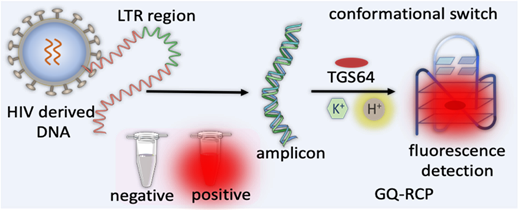
What is HIV?
- About:
- HIV stands for Human Immunodeficiency Virus, which is a virus that attacks the immune system in the human body.
- It primarily targets and damages CD4 immune cells (a type of White Blood Cell), which are essential for the body's ability to fight infections and diseases.
- Over time, HIV weakens the immune system, leaving the body vulnerable to opportunistic infections and cancers.
- Transmission:
- HIV is primarily spread through the exchange of certain bodily fluids such as blood, semen, vaginal fluids, and breast milk.
- Severity:
- If left untreated, the virus destroys a person’s immune system and they are said to be in the Acquired Immunodeficiency Syndrome stage (AIDS) where they get several opportunistic infections that may result in death.
- Cure:
- Although there are no cures for the infection at present, the disease can be managed using antiretroviral therapy.
- These medicines suppress the replication of the virus within the body, allowing the number of CD4 immune cells to bounce back.
What is the State of HIV Infection in India?
- Current Prevalence:
- According to the National AIDS Control Organization (NACO), as of 2021, approximately 2.4 million people are living with HIV in India, with an adult prevalence rate of 0.22%.
- The India HIV Estimates 2021 report indicated that there were about 2.3 million people living with HIV, showing a downward trend in new infections
- Demographic Distribution: The epidemic is concentrated among high-risk populations, including female sex workers (2.61%) and injecting drug users ( 5.91%),
- Children under 15 years account for about 3.5% of all infections, while women represent approximately 39% of the total HIV-positive population.
- High-Prevalence States: The northeast region States have the highest adult HIV prevalence (2.70% in Mizoram, 1.36% in Nagaland and 1.05% in Manipur), followed by southern States (0.67% in Andhra Pradesh, 0.47% in Telangana and 0.46% in Karnataka).
- The number of People Living with HIV (PLHIV) is estimated at around 24 lakhs. Southern States have the largest number of PLHIV viz. Maharashtra, Andhra Pradesh and Karnataka are the top three.
What are the Government Initiatives Related to HIV?
- National AIDS Control Program (NACP):
- Launch and Evolution: Established shortly after the first AIDS case was reported in India in 1986, the NACP has evolved through multiple phases since its inception in 1992. The program focuses on prevention, treatment, and care for people living with HIV/AIDS.
- Phases of NACP:
- Phase I (1992-1999): Focused on awareness generation, blood safety, and establishing surveillance systems.
- Phase II (1999-2006): Expanded targeted interventions for high-risk populations and involved NGOs in implementation.
- Phase III (2007-2012): Dramatically scaled up targeted interventions and strengthened surveillance.
- It emphasised partnerships with civil society organizations to enhance community involvement.
- Phase IV (2012-2021): Aimed to consolidate gains and further integrate HIV services into the public health system. Focused on comprehensive care, support, and treatment for people living with HIV.
- Phase V (2021-2026): It aims to reduce new HIV infections and AIDS-related deaths by 80% by 2025-26 compared to 2010 levels.
- Legislative Framework: The HIV/AIDS Prevention and Control Act (2017) provides a legal framework to protect the rights of people living with HIV/AIDS, ensuring access to treatment without stigma or discrimination.
- International Support: India receives technical assistance and funding from various international partners such as UNAIDS, WHO, the World Bank, and private foundations like the Bill & Melinda Gates Foundation.
UPSC Civil Services Examination Previous Year Question (PYQ)
Prelims
Q. Which of the following diseases can be transmitted from one person to another through tattooing? (2013)
- Chikungunya
- Hepatitis B
- HIV-AIDS
Select the correct answer using the codes given below:
(a) 1 only
(b) 2 and 3 only
(c) 1 and 3 only
(d) 1, 2 and 3
Ans: (b)
Megalithic Footprints and Human Figure
Why in News?
Recently, 24 pairs of prehistoric Megalithic footprints and a human figure have been discovered in Madikkai, Kerala which is believed to date back to the Megalithic period.
What are the Key Highlights of Findings?
- Cultural Significance: All footprints point westward, potentially signifying their symbolic importance.
- Archaeologists interpret them as representing the souls of deceased individuals, while local residents attribute them to a goddess.
- Age: It is estimated to be over 2,000 years old, adding depth to the historical narrative of Kerala.
- Other Discoveries: It resembles prehistoric rock art found at Avalakki Pera in Udupi district, Karnataka.
- Prehistoric discoveries in Kerala include:
- Temple decorations at Erikulam valiyapara in Kasaragod.
- Running tiger carvings in Neeleswaram.
- Human figures at Cheemeni Ariyittapara.
- Bull figures at Ettukudukka in Kannur.
- Edakkal Caves carvings in Wayanad.
- Prehistoric discoveries in Kerala include:
Note
Prehistoric refers to the period of human history before the existence of written records. It encompasses the time from the earliest human existence to the advent of writing systems, which generally predates 3000 BCE.
What is Megalithic Culture?
- About: Megalithic Culture refers to a prehistoric cultural tradition characterized by the construction of large stone structures or monuments, known as megaliths.
- Chronology of Megaliths: The Brahmagiri excavation dates South India's megalithic cultures to between the 3rd century BC and 1st century AD.
- Geographical Distribution: The main concentration of megalithic culture is in Deccan, especially south of the Godavari River.
- It has been found across the Punjab Plains, Indo-Gangetic basin, Rajasthan, Gujarat, and Burzahom in Jammu and Kashmir, with key sites including Seraikala (Bihar), Khera (Uttar Pradesh), and Deosa (Rajasthan).
- Use of Iron: The Megalithic period in South India marked a full-fledged Iron Age culture, where iron technology was fully utilized.
- It is evidenced by iron weapons and agricultural implements discovered from Junapani in Vidarbha to Adichanallur in Tamil Nadu.
- Rock Paintings: Rock paintings found at megalithic sites depict scenes of hunting, cattle raids, and group dancing.
UPSC Civil Services Examination, Previous Year Question (PYQ)
Consider the following pairs: (2021)
(Historical Place) (Well-known for)
- Burzahom : Rock-cut shrines
- Chandraketugarh : Terracotta art
- Ganeshwar : Copper artefacts
Which of the pairs given above is/are correctly matched?
(a) 1 only
(b) 1 and 2
(c) 3 only
(d) 2 and 3
Ans: (d)
Science of Plant Communication
Plants though silent exhibit a sophisticated communication system crucial for their survival functioning through chemical signals and underground networks.
- Chemical Warning System: Plants release volatile organic compounds (VOCs) when threatened by herbivores or other dangers.
- These airborne and soil-borne signals alert neighbouring plants to prepare defensive mechanisms like producing toxins.
- VOCs can travel through the air and soil, allowing communication over considerable distances to protect plants.
- Wood Wide Web: Through symbiotic relationships with mycorrhizal fungi, plants form an underground network called “wood wide web.”
- This fungal network facilitates nutrient exchange and distress signals, helping plants collectively respond to droughts or pests.
- Cooperation and Support: Plants share nutrients to aid struggling neighbours, especially in resource-scarce environments like dense forests.
- This cooperative behaviour fosters ecosystem resilience and enhances overall forest health.
Read More: Plant-to-Plant Warning Signals.
Bhu-Neer Portal
The Ministry of Jal Shakti during the 8th India Water Week-2024 launched the “Bhu-Neer” portal, a significant initiative aimed at enhancing groundwater regulation in India.
- About: The Bhu-Neer portal was developed by the Central Ground Water Authority (CGWA) under the Ministry of Jal Shakti in collaboration with the National Informatics Centre (NIC).
- It aims to improve groundwater regulation, ensuring transparency, efficiency, and sustainability in groundwater usage.
- Key Features: The Portal has a centralised database for groundwater compliance and policies, enhancing the Ease of Doing Business by simplifying groundwater regulation.
- User-friendly interface with a Permanent Account Number-based single ID system.
- NOC (No Objection Certificate) generation with QR code for streamlined processes.
- CGWA has been constituted under the Environment (Protection) Act, 1986 to regulate and control the development and management of groundwater resources in the country.
- NIC, established in 1976, is a key builder of e-Government applications and promoter of digital opportunities for sustainable development under the Ministry of Electronics and Information Technology (MeitY).
Read more: Protecting Our Groundwater: A Priority for a Sustainable Future
`Bandipur Tiger Reserve
Recently, the government has imposed restrictions on the annual jatara (last Monday of Kartika month) of Beladakuppe Sri Mahadeshwaraswamy Temple which is in the core area of Bandipur Tiger Reserve (BTR).
- The temple is situated within the Hediyala range of BTR, a protected area for wildlife.
- Tiger reserves are constituted using a core and buffer conservation method.
- The core area is free of all human use while the buffer area has conservation oriented land use.
- About BTR (Karnataka):
- BTR is a key component of the Western Ghats landscape, which houses 1/8th of the world's tiger population.
- It is part of the Bandipur, Nagarahole, Wayanad, Mudumalai, and Sathyamangalam Tiger Landscape, which spans across Karnataka, Tamil Nadu, and Kerala.
- It forms a crucial part of the Nilgiri Biosphere Reserve, the first Biosphere Reserve in India (1986).
- The reserve is part of the Mysore Elephant Reserve, home to the world's largest population of Asian Elephants.
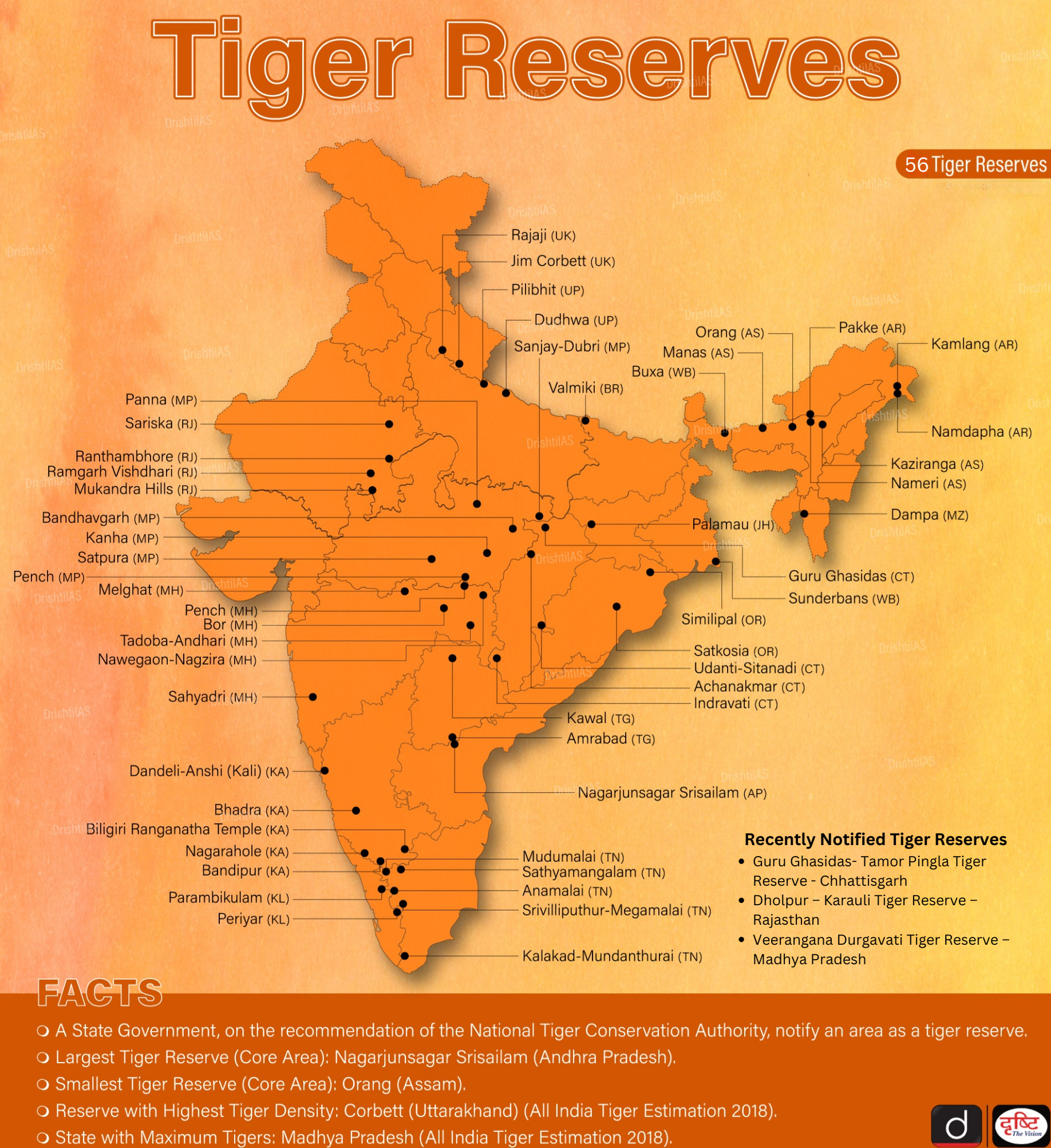 Read More: Project Tiger
Read More: Project Tiger

